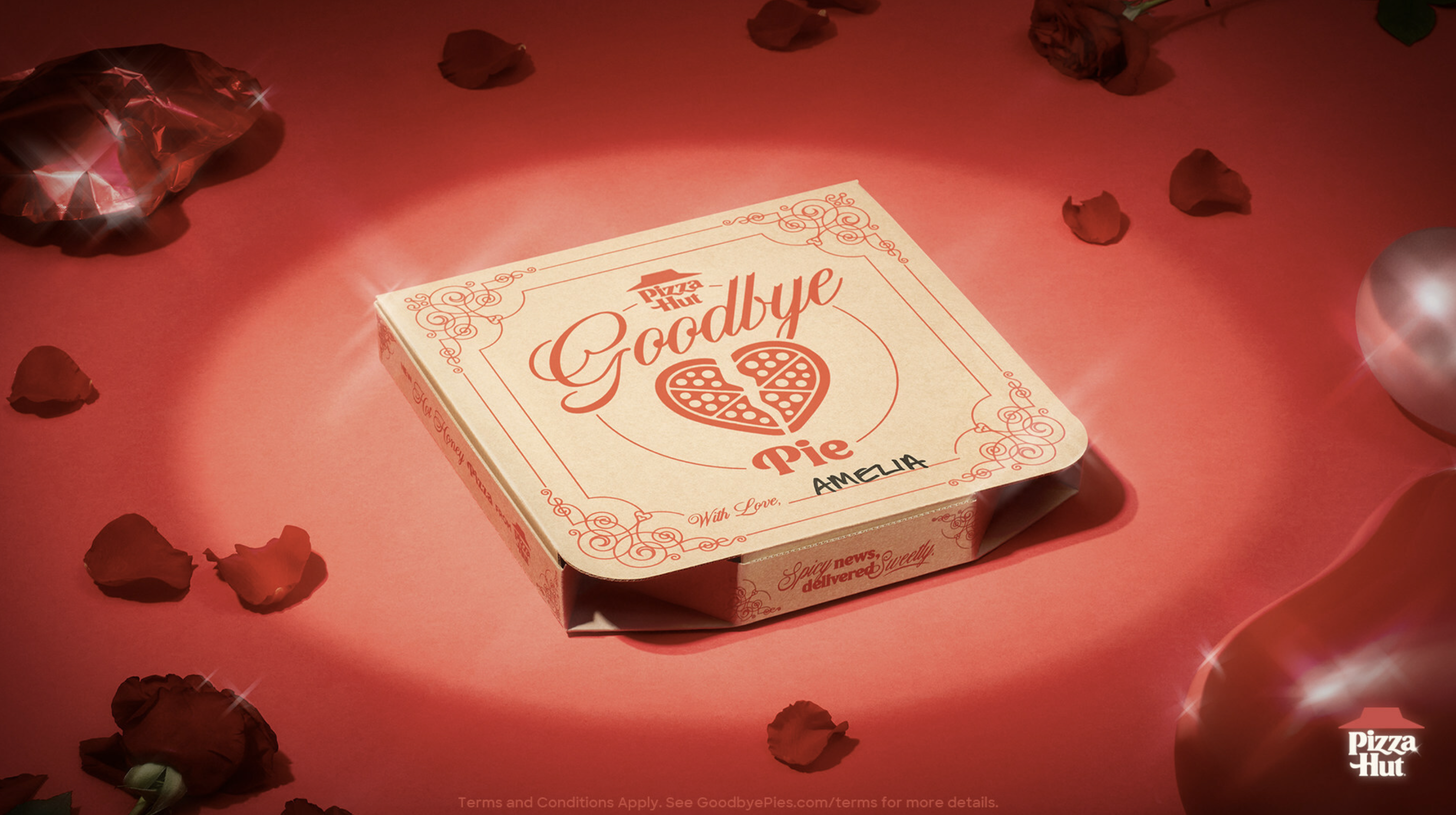LA Heartbreak: “Goodbye Pies” for Valentine’s Day with Pizza Hut delivering Spicy News in a Sweet Way
Pizza Hut announces a new Valentine’s Day offering, “Goodbye Pies” with the launch of its new sweet yet spicy Hot Honey pizza.
There’s a misconception that breakups don’t happen around Valentine’s Day, but research shows it’s actually a holiday centered around the most heartbreak with 45% of people agreeing it’s better to do the deed right before the holiday itself*.
There’s even a phenomenon called ‘Red Tuesday’, which is the Tuesday before Valentine’s Day, where people break up most often in the year.**
That’s why starting this Red Tuesday, February 6, through Valentine’s Day, Pizza Hut is launching new, limited-edition Hot Honey “Goodbye Pies” to help deliver spicy news in a sweet way for FREE.
By sending a Goodbye Pie, Pizza Hut will help you break up with your significant other by delivering a personalized, simple message on custom packaging with a sweet and spicy Hot Honey pizza to ease the pain.
The custom Goodbye Pie pizza boxes also leave a space on the top for the break-upper’s name to be added.
To submit for a chance to send a free Goodbye Pie, simply visit GoodbyePies.com starting February 6 to ditch that awkward break-up convo and send a pizza instead.
This offer will be available through February 14 at select locations in the three major U.S. cities notorious for heartbreaks – NYC, Chicago and Miami, while supplies last. Not available in your city?
The website above can also be used to request Pizza Hut instead write a breakup text for you to send, along with a link to a gift card for your future-ex to redeem a free Hot Honey pizza. Limited quantities only available during this limited time.***
“The rising popularity of the sweet-heat flavor profile has led to Hot Honey becoming the most requested test item by our team members and we are thrilled to have it as the newest addition to our menu,” shared Lindsay Morgan, Chief Marketing Officer at Pizza Hut.
“With the launch of Goodbye Pies, we are bringing that perfect blend of sweet and heat experience to real life, delivering spicy news in the sweetest way for Valentine’s Day.”
Pizza Hut’s Hot Honey Pizza and Wings can be found nationwide at participating Pizza Hut locations starting at $11.99 for a medium pizza and $5.99 for 6 count boneless wings. Pricing and participation may vary.
- Hot Honey Pizza: Featuring a pizza crust topped with marinara sauce, a generous layer of cheese, classic pepperoni, a hot honey drizzle made with real honey infused with chili peppers and crispy cupped pepperoni, balancing the honey’s sweet heat with the savory-salty taste of the pepperoni. The crisp pepperoni cups are ideally shaped to hold the hot honey drizzle.
- Hot Honey Wings: Available in both bone-in and boneless versions, these wings are coated in Hot Honey and double-dipped in sensational sweet heat flavors.
This new Hot Honey innovation will be spotlighted in a new Pizza Hut campaign, titled “Pizza wHut!?” which will roll out nationally in February bringing to life Pizza Hut’s commitment to flavor innovation as the brand continues to reinvent and perfect everyone’s favorites with new and craveable flavors.
Visit PizzaHut.com for more information.
*According to YouGov.com poll.
**Described on The-Sun.com.
*** AVAILABLE FIRST-COME, FIRST-SERVED, WHILE SUPPLIES LAST EACH DAY. QUANTITIES ARE LIMITED. Open to legal US residents physically residing in the 50 U.S. and D.C who are 18+ years of age. Offer Recipients must live in select zip codes in New York City, Chicago or Miami. Ends at 11:59:59 pm CT on 2/14/24, or when all available Incentives are claimed (whichever comes first). A minimum of 10 Goodbye Pie Incentives and 50 Breakup Text Offers are available each Incentive and Offer Period per Market. Limit one (1) Incentive and Offer per person and per household. Other restrictions apply.
For Incentive and Offer Periods and a list of eligible Zip Codes and full Terms, visit www.goodbyepies.com/terms





LOL. Cute idea!